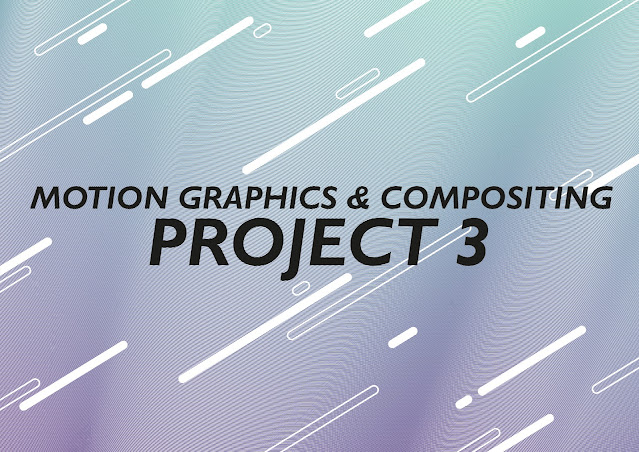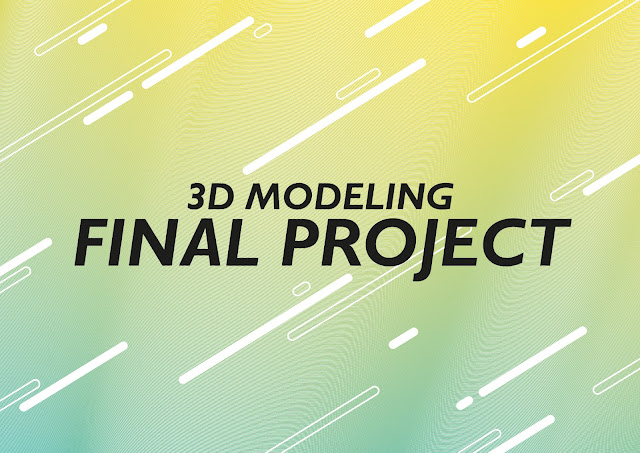Exercises
Soo Wen Yi (0334653)
Information Design _
LECTURES_
Lecture 01 _7 Jan 2020 (week 01)
Mr Kannan briefed us on the assignments and told us to look over the slides provided.
10 Jan 2020
Then we are told to present Manuel Lima's 9 Directives Manifesto with provided information on the slides above.Below is the slides of my group 3B.
Lecture 02 _
14 Jan 2020 (week 02)
Ms Anis started briefing us with the next FLIP presentation on L.A.T.C.H. A much more structured organisation for information. Location, most commonly used is in map, continents, countries, states etc. alphabetically order most common, dictionary, names like places not only people. Time, not only timetable, hours, day, months are classified by time. Category, most common, what we used on our button exercise with sizes, holes textures etc. Hierarchy, most applicable to information that acquires values, numbers, social organizations based on importance of numerical values Maslow's hierarchy, food pyramid. In our group look at which is the best application to use to organise information. Mr Kannan mentioned to us about mood boarding. When doing mood board, write little notes on specific details that we like so when we look back we remember about the points. Next is thumbnail sketching, most of the time when we sketch/design we become a fine artist, we became too attached to the sketches. Sketching should be freely expressing ideas. Lastly, its ideation, don't limit yourself, change the angles, layout design, composition etc.
17 Jan 2020
Today we presented the L.A.T.C.H principles and here is my group's slides.17 Jan 2020
INSTRUCTIONS_
EXERCISES_
Week 017 Jan 2020
This is an individual exercise. We were instructed to each take buttons from 1 section from the button box and quantify the information from the buttons that we have. Think about what kind of information we can present from the cluster of the buttons. And we are required to take a picture of the quantified data on a piece of A4 paper with the buttons. We then will continue with the final assembly on Friday's class.
 |
| Fig. 1.1: the cluster of buttons that I've selected |
 |
| Fig. 1.2: general grouping with buttons that is the same |
 |
| Fig. 1.3: 1st try on categorising according to the size and finish of the buttons |
 |
| Fig. 1.4: 2nd try on categorising |
 |
| Fig. 1.5: close up of the smooth buttons |
 |
| Fig. 1.6: close up of smooth buttons (left), and buttons with raised edge (right) |
 |
| Fig. 1.7: categorised buttons |
 |
| Fig. 1.8: collected data |
 |
| Fig. 1.9: pink button seems like the most similar to the category that is flat and smooth. Image retrieved from: http://baublesandbuttons.com/2012/02/05/chapter-3/ |
 |
| Fig. 1.10: they're called 'Tire Shape Rims', which is quite similar to the category that is raised edge. Image retrieved from: http://baublesandbuttons.com/author/janet/ |
 |
| Fig. 1.11: layout sketches |
Continue Exercise 1
Today we are to execute our infographic during class. After taking a look at my sketches I realised I can also sub categorise the buttons into their own colour. So here is an updated data.
 |
| Fig. 1.12: updated categorised data |
 |
| Fig. 1.13: layout of buttons |
 |
| Fig. 1.14: Final of exercise 1 |
Week 02
14 Jan 2020
Exercise 2
This exercise is to produce a infographic poster on 4 Pokemon of our choice, it has to be done digitally on A4 size. We should utilised the L.A.T.C.H principles, and think about how we can showcase the information.I am looking forward to this exercise as I am quite familiar with the Pokemon franchise, especially with more recent generations. After giving it a long thought, I chose to use 4 legendary Pokemon from Pokemon Sun and Moon.
 |
| Fig. 2.1: the 4 Pokemon that I chose to use |
These are the guardian Pokemon of the 4 Alola Islands in Pokemon Sun and Moon. Here are some notes that I took down.
 |
| Fig. 2.2: notes page 1 |
 |
| Fig. 2.3: notes page 2 |
 |
| Fig. 2.5: screenshot 2, the guardians at the altar of sun |
 |
| Fig. 2.6: Tapu Koko "closed shell" form |
 |
| Fig. 2.7: Tapu Lele "closed shell" form |
 |
| Fig. 2.8: Tapu Bulu "closed shell" form |
 |
| Fig. 2.9: Tapu Fini "closed shell" form |
 |
| Fig. 2.10: screenshot of the trail stamps in the Pokemon Sun and Moon game |
 |
| Fig. 2.11: the order of the Pokemon's appearance in the game/Pokedex |
 |
| Fig. 2.12: sketches page 1 |
I decided to go with sketch number 4 on page 1. I also added a small Rotom Dex, which is the Pokedex in this generation.
 |
| Fig. 2.14: picture of the Pokedex talking, later will refer to this speech bubble |
Continue exercise 2
While thinking about the background of the poster, I remembered that the map in the game has grids so I decided to use that.
 |
| Fig. 2.15: picture of the map in the game |
 |
| Fig. 2.16: screenshot of process |
 |
| Fig. 2.17: screenshot of process |
I wanted to bring the essence of the game into the poster, so I looked for a font that is suitable and downloaded to use it, here is the link to the font.
 |
| Fig. 2.18: screenshot of process |
 |
| Fig. 2.19: screenshot of process |
 |
| Fig. 2.20: screenshot of process |
The composition so far is a bit awkward, so I enlarged the title and moved the Pokemon down. I also distressed the sun and moon logo in the background to match the island trial stamps look.
 |
| Fig. 2.21: screenshot of process |
 |
| Fig. 2.22: screenshot of process |
 |
| Fig. 2.23: draft 2, changed background colour |
 |
| Fig. 2.24: draft 3, added lines to link to the island |
Then I wanted to add a texture overlay, I chose a stained paper.
 |
| Fig. 2.25: texture used, retrieved from here |
 |
| Fig. 2.26: texture applied but changed the colour too much for my liking |
Below I changed the texture to black and white and is the final result of exercise 2.
 |
| Fig. 2.27: final exercise 2 poster |
Here is a PDF version of the final exercise 2 poster.
This overall infographic poster was inspired by the appearance of Pokedex map in Pokemon Sun and Moon game. The first L.A.T.C.H application that I used is location with the map and the markers of the location where each Pokemon are found. Second is time, the order of the Pokemon in clockwise is the order that they appear in the game. Tapu Koko first, Tapu Lele second, Tapu Bulu third and lastly Tapu Fini fourth. The next L.A.T.C.H application I used is hierarchy, this can be seen in the overall poster, from the size of the actual Pokemon compared to the shell form and the opacity of the island stamp to the large title and the small Rotomdex (Alola Pokedex) on the botom right corner.
FEEDBACK_
Week 01
10 Jan 2020
For presentation: Ms Anis said our presentation is straight to the point.
Week 02
17 Jan 2020
For presentation: Mr Kannan said well done on the presentation.
REFLECTION_
EXPERIENCES
Week 01
It was a bit of a shock since we went into it straight away, but clear instructions were given which made it easier to ease into working right away. The presentation was a bit rough as I was nervous to present after a month of not doing it. The data for the buttons was a bit rough to figure out as we are not doing it digitally instead we have to use the actual buttons.
Week 02
It was fun knowing the "theme" of this exercise is Pokemon which motivated me to finish it as quick as possible. I wanted to redraw the Pokemon, but my laptop have some issue and kept crashing :( And it was good that I finish with what I had for me to submit it, overall not that satisfied but it's fine.
Week 02
It was fun knowing the "theme" of this exercise is Pokemon which motivated me to finish it as quick as possible. I wanted to redraw the Pokemon, but my laptop have some issue and kept crashing :( And it was good that I finish with what I had for me to submit it, overall not that satisfied but it's fine.
OBSERVATIONS
Week 01
I didn't elaborate on the presentation topics enough.
Week 02
I've seen a lot of different ways the information are presented by looking at my friends' and classmates' posters, it was also interesting to see what kind of style everyone has chosen to do, I've seen some that are similar to the examples that the lecturers gave, same that has isometric look to it.
Week 02
I've seen a lot of different ways the information are presented by looking at my friends' and classmates' posters, it was also interesting to see what kind of style everyone has chosen to do, I've seen some that are similar to the examples that the lecturers gave, same that has isometric look to it.
FINDINGS
Week 01
I have to be more confident in presenting and also elaborate on the topics and find examples to do a better job at it.
Week 02
I need to walk around more often like i use to do in typography class, which not only gives me a break from my work, but also help other's who might want opinion on their work and also sometimes get inspired by multiple works.
I have to be more confident in presenting and also elaborate on the topics and find examples to do a better job at it.
Week 02
I need to walk around more often like i use to do in typography class, which not only gives me a break from my work, but also help other's who might want opinion on their work and also sometimes get inspired by multiple works.
















Comments
Post a Comment